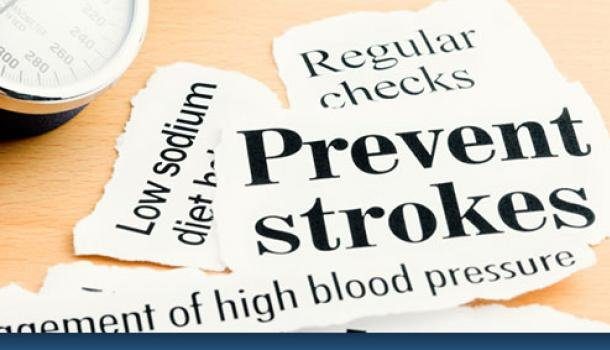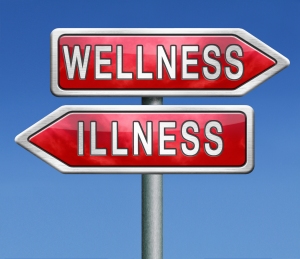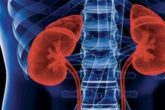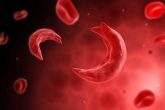
A stroke occurs when blood flow to a part of the brain stops. If blood flow is cut off for longer than a few seconds, the brain cannot get blood and oxygen. Part of the brain can die, causing brain damage. Stroke occurs rapidly and requires immediate treatment which is why it is sometimes referred to as brain attack. In Nigeria, one third of people die within the first 7 days after a stroke and a little less than half die within 6 months. Most stroke survivors (85%) are left with problems associated with moving, thinking, and talking which may improve in the weeks to months after a stroke.
Symptoms of Stroke
The symptoms of stroke depend on which part of the brain is damaged. In some cases, a person may not know that a stroke has occurred.
Most of the time, symptoms develop suddenly and without warning. However, symptoms may occur on and off for the first day or two. Symptoms are usually most severe when the stroke first happens, but they may slowly get worse.
- Change in alertness (including sleepiness, unconsciousness, and coma)
- Trouble with walking: You may stumble or experience sudden dizziness, loss of balance or loss of coordination.
- Trouble with speaking and understanding: You may experience confusion. You may slur your words or have difficulty understanding speech.
- Paralysis or numbness of the face, arm or leg: You may develop sudden numbness, weakness or paralysis in your face, arm or leg, especially on one side of your body. Try to raise both your arms over your head at the same time. If one arm begins to fall, you may be having a stroke. Similarly, one side of your mouth may droop when you try to smile.
- Trouble with seeing in one or both eyes: You may suddenly have blurred or blackened vision in one or both eyes, or you may see double.
- Lack of control over the bladder or bowels
- Headache: A sudden, severe headache, which may be accompanied by vomiting, dizziness or altered consciousness, may indicate you’re having a stroke. The headache wakes you up from sleep and gets worse when you change positions or when you bend, strain, or cough. This type of headache may occur if the stroke is caused by bleeding in the brain.
Types of Stroke
There are two major types of stroke:
- Ischemic stroke – occurs when a blood vessel that supplies blood to the brain is blocked by a blood clot. Most strokes (85%) are ischemic strokes.
- Hemorrhagic stroke – occurs when a blood vessel in part of the brain becomes weak and leaks or bursts open.
A transient ischemic attack (TIA) — also called a mini-stroke — is a brief period of symptoms similar to those you have in a stroke. A temporary decrease in blood supply to part of your brain causes mini-strokes, which often last less than five minutes. A TIA doesn’t leave lasting symptoms because the blockage is temporary.
Seek emergency care even if your symptoms seem to clear up. If you’ve had a mini-stroke, it means there’s likely a partially blocked or narrowed artery leading to your brain, or a clot source in the heart, putting you at a greater risk of a full-blown stroke that could cause permanent damage later.
Up to half of people whose symptoms appear to go away actually have had a stroke causing brain damage.
Risk Factors/ Causes of Stroke
- High Blood Pressure is the main risk factor for strokes
- Heart disease
- Diabetes
- Family history of stroke
- High cholesterol
- Increasing age, especially after age 55
- Race (black people are more likely to die of a stroke)
- Unhealthy lifestyle habits such as smoking, high fat diet, and lack of exercise
- Birth control pills (especially in women who also smoke and are older than 35)
Complications of Stroke
A stroke can sometimes cause temporary or permanent disabilities, depending on how long the brain lacks blood flow and which part of the brain was affected. Complications may include:
- Paralysis or loss of muscle movement. You may become paralyzed on one side of your body, or lose control of certain muscles, such as those on one side of your face or one arm. Physical therapy may help you return to activities hampered by paralysis, such as walking, eating and dressing.
- Difficulty talking or swallowing. A stroke may cause you to have less control over the way the muscles in your mouth and throat move, making it difficult for you to talk clearly, swallow or eat. You also may have difficulty with language (aphasia), including speaking or understanding speech, reading, or writing. Therapy with a speech and language pathologist may help.
- Memory loss or thinking difficulties. Many people who have had strokes experience some memory loss. Others may have difficulty thinking, making judgments, reasoning and understanding concepts.
- Emotional problems. People who have had strokes may have more difficulty controlling their emotions, or they may develop depression.
- Pain. People who have had strokes may have pain, numbness or other strange sensations in parts of their bodies affected by stroke.
Can Stroke be treated?
Stroke is a medical emergency! Seek immediate medical attention if you notice any signs or symptoms of a stroke, even if they seem to fluctuate or disappear
Think “FAST” and do the following: (acronym for Stroke symptom recognition)
Face. Ask the person to smile. Does one side of the face droop?
Arms. Ask the person to raise both arms. Does one arm drift downward?
Speech. Ask the person to repeat a simple phrase. Is his or her speech slurred or strange?
Time. If you observe any of these signs, get the person to a hospital immediately. Don’t wait to see if symptoms go away. Every minute counts.
The longer a stroke goes untreated, the greater the potential for brain damage and disability. To maximize the effectiveness of evaluation and treatment, you’ll need to be treated at a hospital within four hours after your first symptoms appeared.
If you’re with someone you suspect is having a stroke, watch the person carefully while waiting for emergency assistance. In Africa, we have limited resources, poor access to healthcare facilities, manpower shortage, lack of organized stroke unit in hospitals, inadequate neuro-imaging (special xray/scanning) facilities (CT scan, MRI, Carotid Ultrasound, Cerebral Angiogram, etc) and ambulance services. These together with lack of awareness of stroke in the populace contribute to delay in care seeking and severity of outcome.To be effective, treatment must be started within 3 to 4 1/2 hours of when the symptoms first started.
Is it Possible to Prevent a Stroke?
Up to 50% of all strokes are preventable. Many risk factors can be controlled before they cause problems.
Debunking African Myths
Myth #1: Stroke only occurs in older people
Stroke can happen to anyone including children (usually due to Sickle Cell Disease). However, heredity, race, and gender can increase one’s risk. For example, stroke is higher among Africans and African-Americans than Caucasians, in part because Africans have higher risk of elevated blood pressure and diabetes. Women are 2.5 times more likely to have a stroke than breast cancer. Unfortunately, the number of strokes among young and the middle-aged is rising, a sign that the obesity epidemic may be starting to shift the age burden of the disease.
Myth #2 The African mind set of attributing external causes to illness (e.g.witchcraft, spiritual attack, generational curses, etc)
This mindset impacts care seeking, delays diagnosis and proper treatment.
Myth #3 The risk for a second stroke is highest during the weeks or months after the first stroke.
The risk begins to decrease after this period.
Uncontrollable Risk Factors for Stroke:
- Age (>65)
- Gender (Men have more strokes, but women have deadlier strokes)
- Race (Africans are at increased risk)
- Family history of stroke
These lifestyle changes will help lower your blood pressure and keep your blood sugar controlled. This will also help to reduce your risk of heart disease and stroke. Yearly check ups with your doctor to measure blood pressure and blood sugar level will also provide early diagnosis of high blood pressure and diabetes.
Controllable Risk Factors for Stroke:
The single most important thing any of us can do to prevent stroke is to be sure our blood pressure is controlled. Other steps you can take to reduce your risk are to treat high cholesterol, control blood sugar, and lifestyle changes such as:
- Eat a better diet, including reducing salt. Eat less fatty foods as well as more fresh fruits, vegetables and whole-grain foods.
- Regular exercise – at least 30 minutes a day
- Maintain a healthy weight – Being overweight increases your risk of developing high blood pressure.
- Manage stress – Don’t let stress build up. The chemicals your body makes in response to stress make your heart beat harder and faster and your blood vessels tighten. All this makes blood pressure higher
- Avoid tobacco smoke.
- If you drink, limit alcohol.
- Comply with your blood pressure or diabetes medications.
Author Zaidat Ibrahim
Zaidat gained her Bachelors Degree from a U.S College and she currently works  at Massachusetts General Hospital (MGH) in Boston. She also works as an Editor for Opportunity Desk and volunteers for several organizations through the UNV. She is known for her hard work, commitment and most of all, her beaming smiles.
at Massachusetts General Hospital (MGH) in Boston. She also works as an Editor for Opportunity Desk and volunteers for several organizations through the UNV. She is known for her hard work, commitment and most of all, her beaming smiles.


